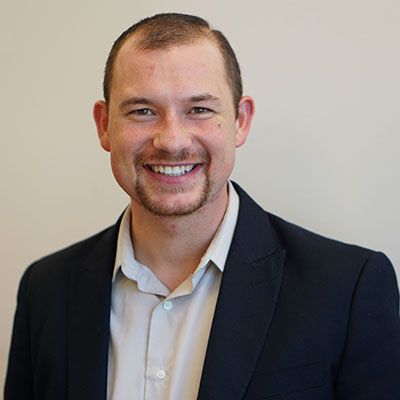For advocates of K–12 online learning, the massive move to virtual schooling precipitated by COVID-19 might seem like a boon. But candidly, I’m more concerned than enthusiastic. High-quality virtual learning takes more than just going online. It requires different skills and strategies than those relevant to brick-and-mortar classrooms, and that expertise doesn’t develop in educators overnight.
As schools shift to online learning, I worry that many students will be bored, frustrated, and harried by technical difficulties. When they go back to school-as-usual, many may have about as much appetite for online learning as for the food ration bricks in an emergency preparedness kit. As a foreboding of what is likely to come, consider how students in China hammered their distance learning app with one-star ratings out of their displeasure with their remote learning experience.
Nonetheless, online learning is the option of last resort for many schools, and they need all the help they can get to make this transition go as smoothly as possible. Other organizations, such as UNESCO, Education Week, CoSN, TNTP, and Instruction Partners offer noteworthy tips and resource links to help with the transition.
Rather than duplicate their guidance, I’d like to step back a level from the “what” of virtual learning to the “how.” Just as my colleague, Chelsea Waite, has offered theory-based guidance on how to plan for and address the uncertainties of shifting to online learning, I hope here to offer research-based insights on how to organize school and district teams to give them their best shot at addressing their new temporary reality.
A team to respond to a crisis
In October 2013, Toyota faced a major safety, liability, and public relations problem. The company discovered that driver-side airbags in some 2012 and 2013 Camry, Venza, and Avalon vehicles were inadvertently deploying without warning. To protect the lives of its customers and its reputation, Toyota needed to act quickly.
A business-as-usual response to this particular crisis would not have worked. Various existing departments within the company had processes in place to solve problems that arose in their everyday work. But solving the airbag crisis required them to make decisions in conjunction with other departments.
As Toyota’s engineers investigated what caused the accidental deployments, they found that, surprisingly, spiders were the culprits! Spiders and their webs had clogged the air conditioner draining tubes, which caused water to spill over onto the airbag control module. In-house counsel decided that even though only three airbag deployments and thirty-five warning light activations had been documented, a “better safe than sorry” recall of some 803,000 cars was warranted. This decision, in turn, required the involvement of the public relations department, which developed a communication plan for car purchasers and managed damage control with the media. It relayed the news that Toyota was recalling the vehicles to apply a sealant to keep out spiders and install a cover to eliminate the dripping—a simple solution that the engineering team had devised.
In summary, to develop an effective coordinated response, Toyota needed to shift to a lightweight team arrangement. In lightweight teams, key managers shuttle back and forth among interdependent groups to ensure that their work fits together correctly. Functional departments retain primary responsibility for their respective parts of the work, but managers work together across these departments to develop coordinated solutions.
Similarly, for districts to effectively communicate and manage school closures related to COVID-19, they need a much higher degree of coordination than required for their day-to-day work. A decision to close a school has major implications for teachers, school-site administrators, and food services, not to mention students and their families. To mitigate the challenges of closing campuses, district leaders should avoid making unilateral decisions from the central office. When groups in the district need to coordinate their efforts to solve a new problem, superintendents need to organize a lightweight team to handle the response. Superintendents need to shuttle back and forth between all their stakeholder groups to first understand all the domino effects of their options and then align their plans and coordinate their efforts. Candidly, this means they will need to put in extra hours coordinating among various groups. But to not do so risks major implementation challenges and backlash as “best laid plans” potentially run afoul of the needs of various stakeholders.
A team to develop quality virtual learning
Lightweight teams work when existing processes across the departments of an organization just need coordination—such as developing an immediate response to a crisis. But when an organization needs to develop completely different processes and approaches for tackling a new challenge or opportunity, such circumstances require a different type of team organization—a heavyweight team.
When Toyota developed its Prius hybrid car, it couldn’t use lightweight teams because the hybrid necessitated a completely different product architecture. The company needed to develop new components—such as large batteries and electric motors—that needed to interface with other components in novel ways. The internal combustion engine needed to coordinate propulsion responsibility with an electric motor. Braking couldn’t just slow the car; it needed to generate electricity. This in turn completely altered the role the battery would play.
To solve this problem, Toyota pulled key people from each department and put them together in a completely new unit to serve as a heavyweight team. They brought their functional expertise—such as engineering, product design, safety, and marketing—to the team, but their role was not to represent the interests or needs of their respective departments. Instead, they needed to engage in intensive collaboration to come up with a new architecture for a new type of car.
A heavyweight team enables its members to transcend the boundaries of their functional departments and interact in different ways. To be effective, members of heavyweight teams often must step away from their prior responsibilities, and a manager with significant clout must lead the team. Members bring their functional expertise with them as they join the heavyweight team, but their mindset must never be to represent the interests of their departments during the team’s deliberations. Rather, they think of themselves as having collective responsibility to figure out a better way to knit things together to meet the overall project’s goals.
Just as Toyota couldn’t invent the Prius by merely upgrading the components of a gas-powered vehicle, good virtual learning is not just a matter of putting conventional instruction online. Accordingly, districts need to employ heavyweight teams if they hope to develop successful virtual learning experiences for their students.
Who should be involved in a district’s heavyweight team to figure out good online instruction?
- Educators from existing district virtual programs OR outside experts on virtual learning
- Conventional classroom teachers who will be leading virtual instruction for their students
- Parents with various work arrangements—e.g. stay-at-home parents, work-from-home parents, and full-time working parents—who will need to support at-home learning
- IT staff members
- District communications leaders
- Anyone else who will be involved in implementing virtual learning
- Anyone else with relevant expertise
At the Christensen Institute, we aim to support schools and districts in their efforts to adopt online learning in response to COVID-19. But even with all our know-how from studying schools and districts across the US and around the world, there’s no way we can prescribe ideal solutions for the varied needs and circumstances of schools and districts. Instead, we hope that the ideas we’ve shared can help districts organize their teams and approach their work in ways that can help them determine the right solutions for their circumstances.
To learn more about organizing teams, see chapter 4 of Blended by Michael B. Horn and Heather Staker, or Meeting the Challenge of Disruptive Change by Clayton M. Christensen and Michael Overdorf.


